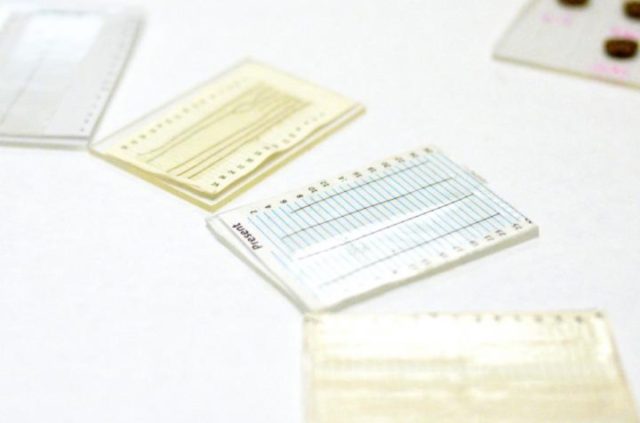There's rarely time to write about every cool science story that comes our way. So this year, we're running a special Twelve Days of Christmas series of posts, highlighting one story that fell through the cracks each day, from December 25 through January 5. First up: a tale of attempted murder and the geologist who hopes he can help solve the case.
A new trace analysis of the victim's hair sheds fresh light on a famous unsolved cold case by establishing a timeline for the thallium poisoning of Chinese college student Zhu Ling in 1994. Published in October in the journal Forensic Science International, the work could one day lead to catching the culprit, and could help solve future heavy-metal poisonings.
Zhu Ling was a sophomore majoring in physical chemistry at Tsinghua University in Beijing, China, when she mysteriously began losing hair, with accompanying stomach pain and muscle paralysis, sinking into a coma four months later. Doctors were initially baffled, but friends posted her symptoms to a Usenet group, drawing attention to Zhu Ling's plight—likely the first telemedicine trial. Physicians around the world agreed the likely cause was thallium poisoning (a toxic heavy metal sometimes used in rat poison), and her doctors treated her with the commercial dye Prussian blue, the most common antidote.
Cold case files
Zhu survived, but with serious brain damage, loss of most of her eyesight, and ability to speak. She remains partially paralyzed, requiring 24-hour care. Worse, she had been deliberately poisoned. Chinese police questioned her classmate and roommate, Sun Wei, the only student who would have had access to thallium, but she was released for lack of evidence. Zhu's poisoning was never solved, but controversy surged anew in 2013 when a medical student poisoned his rival at Fudan University, focusing attention back on her case. People accused the Chinese police of botching the investigation, insisting that Sun Wei's prominent family connections influenced her release.
Now the case is once again back in the news, thanks to Richard Ash, a geologist at the University of Maryland, College Park who specializes in analyzing trace elements in geologic samples. Zhu Ling's family contacted him about establishing a timeline of her poisoning, via a mass spectrometry analysis of several of her hairs collected between 1994 and 1995 over the course of her illness.

Mass spectrometry is a technique for measuring the mass of different molecules in a given sample. The sample is vaporized via heating, and bombarded with an electron beam to ionize the molecules. Then they are separated according to mass by accelerating them and applying electromagnetic fields, then measuring the degree of deflection. The resulting spectrum shows which elements are present in the sample. The technique is frequently used for chemical analysis in a broad range of fields, including forensic chemistry (you've definitely seen it depicted on C.S.I.).
For all its power, however, it's quite the challenge to use mass spectrometry to measure thallium concentrations in hair samples, because until now there hasn't been an established reference material for that purpose. Ash developed his own standard using a material made of orchard leaves, dosing the material with various quantities of thallium and using the mass spec to measure concentrations. "To be honest, I was surprised that the new standard worked so well," said Ash. "Developing my own standard was a shot in the dark, but it paid off."
"I hope that the new information may one day lead to the perpetrator being brought to justice."
Next, Ash scanned the hairs with an ultraviolet laser, and analyzed the resulting tiny particles with the mass spectrometer. Since human hair grows at a constant rate, it was possible to measure how the heavy metal redistributed along the hair's length to determine the timing and dosage amounts of Zhu Ling's exposure to thallium.
Ash found that Zhu Ling had received many doses of toxic thallium, increasing in frequency and concentration over time. For instance, one hair from 1994, before she had any symptoms, showed clear evidence of sporadic exposure to thallium, increasing in dosage and frequency until it fell out in December of that year. But a second hair from March 1995 showed Zhu Ling had ingested large doses of thallium constantly for about two weeks.
The poisoner is still at large. But having an established timeline could help officials build a strong case should they make an arrest. "I hope that the new information our work has provided may one day lead to the perpetrator being brought to justice, and Zhu Ling's family gaining some solace from seeing that," said Ash.
[contf] [contfnew] 
Ars Technica
[contfnewc] [contfnewc]






